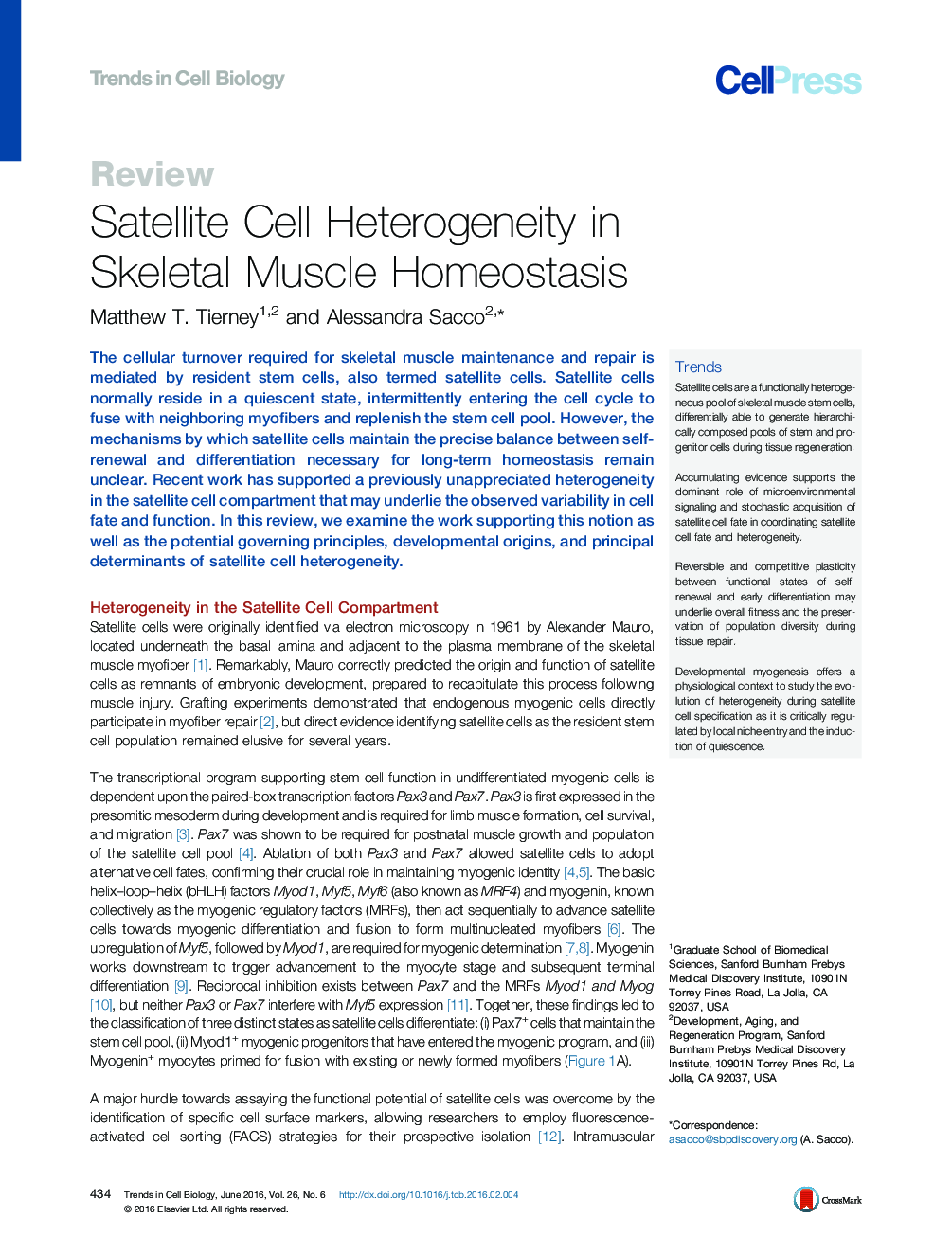| Article ID | Journal | Published Year | Pages | File Type |
|---|---|---|---|---|
| 2204293 | Trends in Cell Biology | 2016 | 11 Pages |
The cellular turnover required for skeletal muscle maintenance and repair is mediated by resident stem cells, also termed satellite cells. Satellite cells normally reside in a quiescent state, intermittently entering the cell cycle to fuse with neighboring myofibers and replenish the stem cell pool. However, the mechanisms by which satellite cells maintain the precise balance between self-renewal and differentiation necessary for long-term homeostasis remain unclear. Recent work has supported a previously unappreciated heterogeneity in the satellite cell compartment that may underlie the observed variability in cell fate and function. In this review, we examine the work supporting this notion as well as the potential governing principles, developmental origins, and principal determinants of satellite cell heterogeneity.
TrendsSatellite cells are a functionally heterogeneous pool of skeletal muscle stem cells, differentially able to generate hierarchically composed pools of stem and progenitor cells during tissue regeneration.Accumulating evidence supports the dominant role of microenvironmental signaling and stochastic acquisition of satellite cell fate in coordinating satellite cell fate and heterogeneity.Reversible and competitive plasticity between functional states of self-renewal and early differentiation may underlie overall fitness and the preservation of population diversity during tissue repair.Developmental myogenesis offers a physiological context to study the evolution of heterogeneity during satellite cell specification as it is critically regulated by local niche entry and the induction of quiescence.
